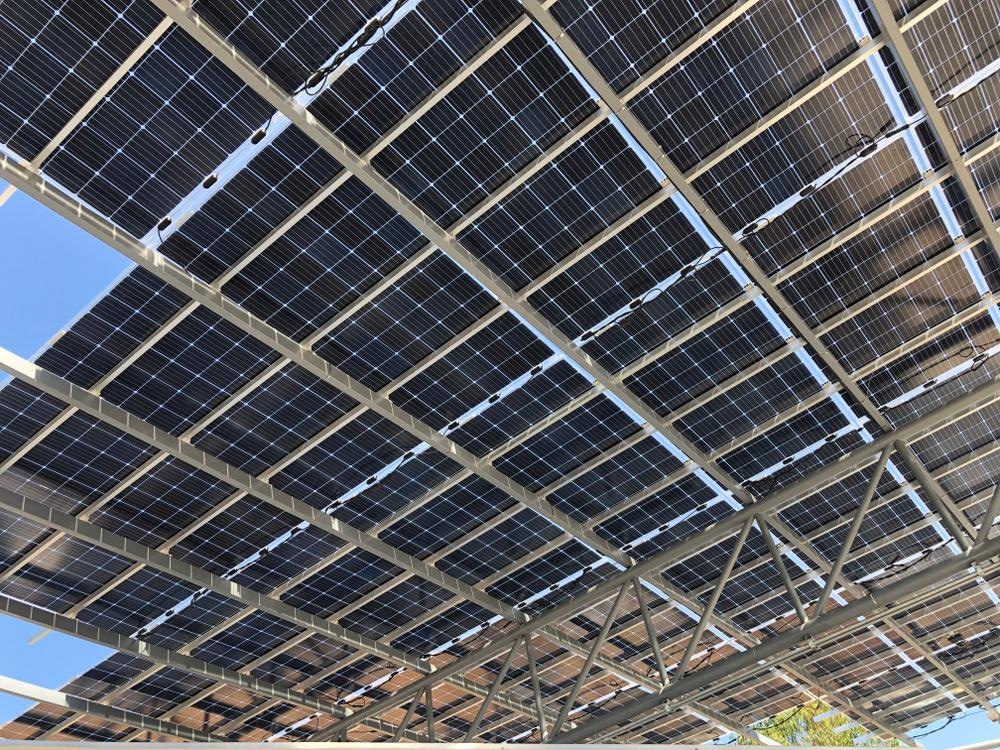The advancements in modern materials science and electronics manufacturing has led to the development of Monolithic two-terminal (2T) perovskite/CuInSe2 (CIS) tandem solar cells (TSCs) that integrate the efficiency of tandem photovoltaic (PV) technology with the simplicity of an all-thin-film device framework. An article published in ACS Energy Letters provides an overview of the first-ever 2T perovskite/CIS TSC with a power conversion efficiency (PCE) approaching 25%.

Study: Monolithic Two-Terminal Perovskite/CIS Tandem Solar Cells with Efficiency Approaching 25%. Image Credit: Jak76/Shutterstock.com
What are Tandem Solar Cells?
To boost single-junction solar cells' photovoltaic (PV) efficiency above the Shockley–Quiesser (S–Q) constraint, multi-junction or tandem solar cells must be developed, which involve the homogeneous bonding/integration of two or more solar cells on top of each other.
Limitations of Single Junction Photovoltaic Devices
Single-junction semiconductors, primarily silicon (Si) photovoltaics, lead the solar energy market. Single-junction Si PV cells, on the other hand, have advanced to the point where their performance is approaching the functional threshold. As a result, a new tandem design could be a viable option.
Solar energy can be used more effectively by layering two or more suitable photovoltaic panels in a tandem orientation, resulting in power conversion efficiencies (PCEs) beyond the maximum limit of single-junction devices, as well as a lower Levelized electricity price.
Why Perovskite Solar Cells are the First Choice for Tandem Cells?
Single-junction perovskite solar cells (PSCs) have made significant development over the last decade thanks to their remarkable optoelectronic characteristics and a strong commitment from the research community. They have surpassed a PCE of 25% and are competing with proven technologies such as silicon.
Perovskite transistors are also ideal options for tandem PV devices due to their varied fabrication pathways and energy band processability.
Factors Affecting Performance of Tandem Solar Cells
In parallel photovoltaic devices, the optical power-loss routes primarily involve parasitic absorbance and reflective shortfalls, which are common to all tandem-built photovoltaic devices.
For optimum efficiency, parasitic absorbance and reflection inefficiencies must be minimized.
Low absorbance in all photoactive layers above the perovskite layer, as well as charge carrier levels with a correct index of refraction and optimal depth for minimal reflections at contacts, should characterize high-efficiency perovskite-based tandem systems.
Can Two-Terminal Solar Cells be Modified to Maximize Power Output?
By modifying the constitution of the perovskite topmost panel and the CI(G)S bottom unit, the energy gap of both may be adjusted. When it comes to monolithic 2T TSCs with two series-connected sub-cells that demand synchronized current production in the upper and lower solar panels for optimum output power, this flexibility comes in handy. Chemical tweaks to increase energy output are also conceivable.
Accelerating Commercialization of Tandem Solar Cells
Although experimental tandem performance benchmarks are continually surpassed, the identified systems primarily rely on laboratory-based technologies and limited cell capacities, preventing a marketable triumph.
The nature of the substrate and the deposition processes is one of the most critical challenges.
More challenges for real-world applications need be explored in addition to large-scale photovoltaic panel deployment, including major improvements in long-term operational reliability as well as the production of simpler semiconductor component layouts with reduced production costs.
Simulation Study of Novel Tandem Solar Cells: Findings
According to the novel tandem solar cells study, 1.08 eV for the PV cell at the bottom is within a band-gap range that can yield a high-efficiency 2T dual PV panel device when used in conjunction with a competent solar electrode at the top.
The band gap of the CI(G)S should be further reduced to conform to the ideal range (∼0.95−1.03 eV) for achieving optimal efficiency.
The analysis reveals that better performances may be attained by reducing the binding energy of the top and bottom absorbers by 100 meV while maintaining the substances' electrical performance. To enhance light in-coupling and boost overall photon energy, an antireflective coating (ARC) was utilized.
Assessment of Opto-Electronic Properties
The researchers calculated the assumed VOC values to examine the photonic efficiency and associated power inefficiencies of tandem systems.
A VOC value of ∼1.10 V from the top PV electrode and a VOC value of ∼0.49 V from the bottom PV panel account for a total of ∼1.59 V.
The researchers reduced the VOC inefficiencies related to high Bromine concentration in the perovskite top electrode and improved the device's inherent cycle photostability by reducing phase separation.
In summary, the research revealed perovskite/CIS TSCs' promise as a crucial alternative energy source, particularly for applications requiring adjustable and compact PV devices, paving the way for future improvements.
Disclaimer: The views expressed here are those of the author expressed in their private capacity and do not necessarily represent the views of AZoM.com Limited T/A AZoNetwork the owner and operator of this website. This disclaimer forms part of the Terms and conditions of use of this website.
Source:
Preciado, M. A. R. et. al. (2022). Monolithic Two-Terminal Perovskite/CIS Tandem Solar Cells with Efficiency Approaching 25%. ACS Energy Letters, Volume 7, pp. 2273-2281. Available at: https://doi.org/10.1021/acsenergylett.2c00707